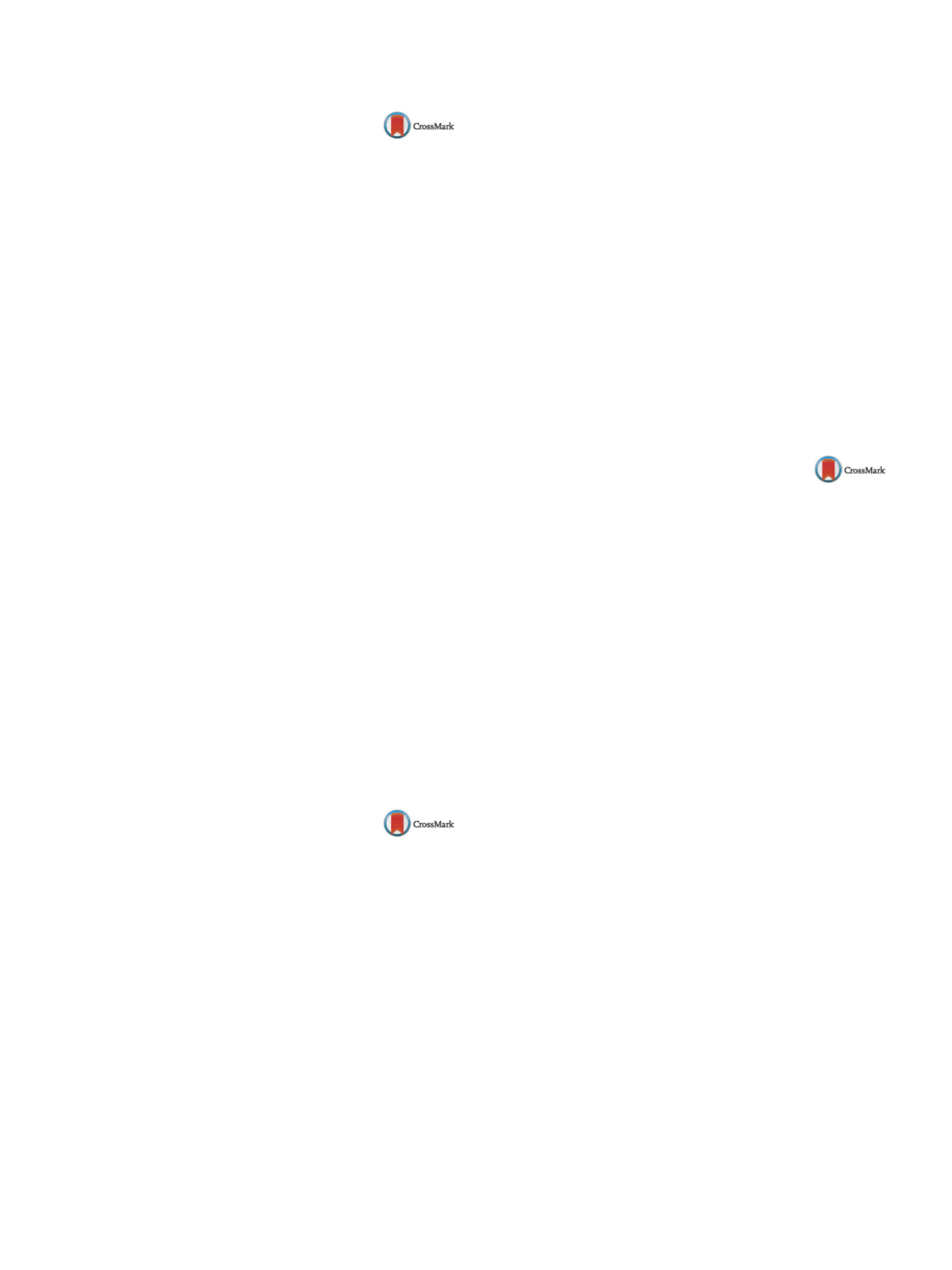

S248
25th European Congress of Psychiatry / European Psychiatry 41S (2017) S238–S302
EW0416
Prevalence of Internet addiction:
A pilot study in a group of Italian
students
D. Marazziti , F. Mucci
∗
, F. Vanelli , N. Renda , S. Baroni ,
A. Piccinni
Università di Pisa, Dipartimento di Medicina Clinica e Sperimentale,
Pisa, Italy
∗
Corresponding author.
Introduction
Internet addiction (IA) is considered part of the so-
called “new technologies addictions” group, that in turn belongs to
awider, novel groupof abnormal behaviors defined “no-drug addic-
tions” or “behavioral addictions”. Similarly to substance abuse,
there is the risk either to arouse symptoms like craving, tolerance
and habituation either to develop a full-fledged addiction to the
Internet.
Aim
The aim of this study is to examine the current pattern of
Internet use and eventually of IA, as well as their main character-
istics, in a group of high-school students from Calabria, a Southern
Italian region.
Methods
Five hundred high-school students (42% boys, 58% girls,
mean age SD
±
16.23 years) volunteered for this study. A specific
questionnaire of 45 items with 5 possible answers ranging between
“never” and “very often” on a Likert scale was developed.
Results
Most of the young subjects interviewed owned a smart-
phone with Internet, and claimed to spend more time online than
at the beginning. Nearly everybody had an active account in a least
one social network. A small withdrawal from social relationships
and from sport activities emerged in this group.
Conclusions
Although about 10% of examined students presented
IA symptoms, our findings cannot be considered representative of
the total high-school population, these results underline the need of
further investigation and awareness. In fact, many underestimated,
vague, and other unspecific neuropsychiatric symptoms, such
as alterations of sleep-wake pattern, chronic fatigue, headache,
visual problems, carpal tunnel syndrome and eventually anxiety
or depression may be underlying to an unrecognized condition
of IA.
Disclosure of interest
The authors have not supplied their decla-
ration of competing interest.
http://dx.doi.org/10.1016/j.eurpsy.2017.02.030EW0417
Intensive case management (ICM)
project in eastern lower Austria:
A description
M. Ramirez Gaite
1 ,∗
, E. Gundendorfer-Mag. FH
2, Dr. W. Hrubos
21
Psychosoziale Zentren GmbH, PSD Tulln, Tulln, Austria
2
Psychosoziale Zentren GmbH, Fachbereichsleitung, Stockerau,
Austria
∗
Corresponding author.
Introduction
Our ICMProject was implemented in 2012, with the
primary objective of preventing hospitalizations and unburdening
services. Here, we present a description.
Objectives
ICM is a type of multi-professional assertive commu-
nity treatment (ACT) and case management, although our concept
has a stronger focus on social work thanACT anduses less resources.
It aims at patient’s stabilization at home, better life quality, less
inpatient/residential treatments, and more access to crisis inter-
vention.
Methods
Presently we have 118 spots. Target groups are persons
with severe psychiatric conditions at high risk for institutionaliza-
tion or already institutionalized, including heavy users of mental
health services. An initial eligibility assessment is required. At
least 3 workers are providing a minimum of 2 h face-to-face con-
tact per week per person. Care is offered predominantly at home
environment and anchored in: careful distance-closeness ratio,
structured and restructuring, autonomy enhancing, respectful,
non-judgmental, confidential, regularity and commitment. Each
treatment plan is individualized and based on two axes: intensive
assistance and day-structure. It comprises comprehensive psychi-
atric treatment, counselling, assistance in everyday life, support
groups, crisis management and interdisciplinary organizational
meetings.
Results
The program was evaluated in 2014 using the CANSAS
and FLZ scales and its effectiveness was validated. Most signifi-
cant improvements were found in day-structure, housing, social
contacts and performance, nutrition, and psycho-education. Life
satisfaction improvement was found mostly in areas of general
health, performance, relaxation and autonomy.
Conclusions
Since its implementation ICMhas steadily expanded.
Further research tools are currently being developed. Results will
be presented in future publications.
Disclosure of interest
The authors have not supplied their decla-
ration of competing interest.
http://dx.doi.org/10.1016/j.eurpsy.2017.02.031EW0418
Attention deficit hyperactivity
disorder and scientific school
performances among Moroccan
children
F.Z. Rouim
1 ,∗
, F.Z. Azzaoui
2, A.O.T. Ahami
11
Faculty of Science Ibn tofail, Biology, Kenitra, Morocco
2
Faculty of science Ben M’sik, Biology, Casablanca, Morocco
∗
Corresponding author.
Background and aim
Attention deficit hyperactivity disorder
(ADHD) is classified as neurodevelopmental disorders. ADHD is
one of the major problems in childhood encountered most often
in schools. A study realized by Platt in 2011 show that chil-
dren with ADHD often experience difficulties in mathematics. The
aim of this study is to assess whether there is a relationship
between school performance in scientific subjects (mathemat-
ics and natural science) and attention deficit hyperactivity
disorder.
Methods
The study was realized among 239 children studying in
a urban school in Kenitra city (North-West of Morocco), and aged
from 6 to 16 years. To evaluate the relationship between ADHD
and the average class results of mathematics and natural science,
Conners rating scale (parent and teacher short version) and the
academic transcripts are used.
Results
The results show that there is a significant corre-
lation (
P
< 0.05,
P
< 0.01) between the average class results in
each natural science and mathematics and three components of
Conners rating scales (parent’s version), which are behavioral
difficulties, learning difficulties and hyperactivity/impulsivity. Fur-
thermore, the Conners rating scale (teacher’s version) show, also,
that there is a significant correlation (
P
< 0.05,
P
< 0.01) between
behavioral difficulties, hyperactivity/impulsivity and Inattention
passivity and the average class results in natural science and in
mathematics.
Conclusion
As known, childrenwith ADHD are not less intelligent
than other children, although our study show that children with
ADHD represent low marks in natural science and in mathemat-
ics. In fact, deeper investigations are needed to study the possible
factors that could affect ADHD children’s school performance.
Disclosure of interest
The authors have not supplied their decla-
ration of competing interest.
http://dx.doi.org/10.1016/j.eurpsy.2017.02.032

















